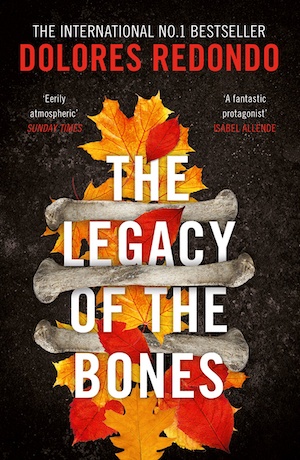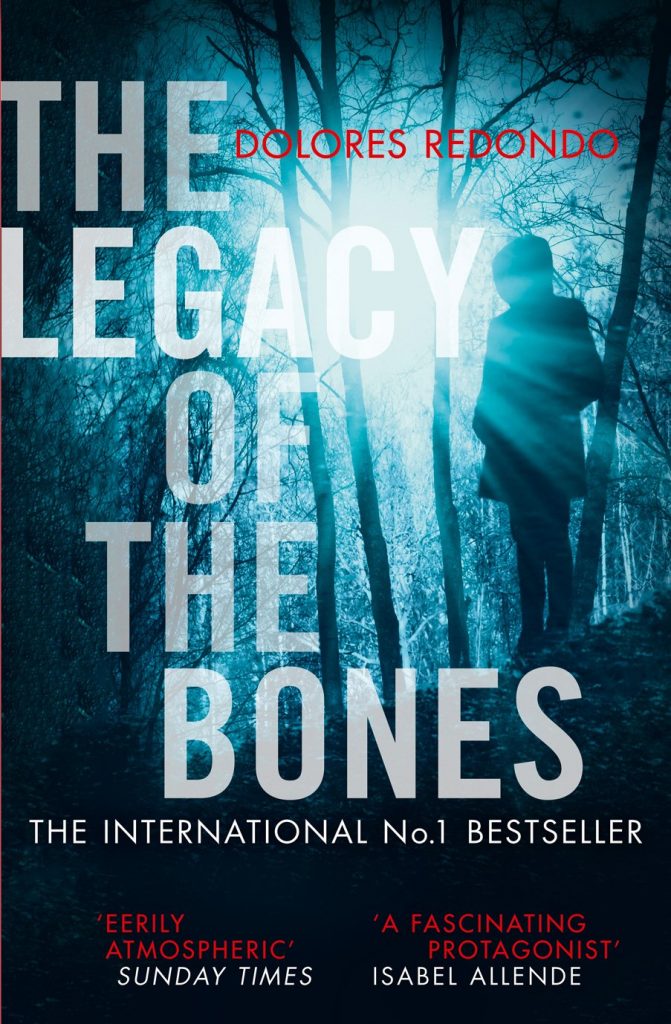
Translated by Nick Caistor and Lorenza Garcia — Just how many secrets is it possible to have in one family? Well, if it’s Spanish author Dolores Redondo’s Baztan Trilogy, it appears the answer is very many indeed. After the disturbing revelations about her mother in The Invisible Guardian, Detective Inspector Amaia Salazar cannot just sit back and enjoy her maternity leave because more metaphorical depth charges about her past are about to explode.
Though that makes the book sound like a soap opera, it’s not the case. However, all of the elements which made the first volume intriguing and memorable are present in this book as well. The endless rain and fog of the Baztan valley in the Pyrenees are thrust into the foreground, and we also have trips to Pamplona and the Atlantic coast between San Sebastian and Bilbao. Myth and legend blends with gritty reality; atmospheric setting meets petty rivalries in the workplace.
A year after arresting the perpetrator from the first book, Salazar is preparing to attend the murder trial. But the murderer commits suicide in the toilets of the courtroom, leaving behind a strange one-word clue: Tarttalo. To Salazar’s surprise, it’s not the only case in which an abusive man has killed his partner, then himself, and left behind this cryptic message. Is it possible that someone is manipulating men into committing crimes? More disturbing still, it appears that the corpses were dismembered after death, and that a portion of the forearm was kept as a souvenir, although the murderers appear to have no recollection of this detail. Just who is keeping a burial mound of bones in a cave?
In The Legacy of the Bones, the author’s style seems to be slicker, but that could be down to due to new translators for this volume. Certainly there is far less information dumping and we get a well-rounded picture for each of the secondary characters within the investigative team. Finally, there are far too few police procedurals in which the main investigator has to juggle baby feeding times and questioning of suspects – the only other which comes to mind is Denise Mina’s Alex Morrow series.
There are some coincidences which stretch belief and the family dimension of the story does occasionally threaten to take over the investigation. What more can the author possibly reveal in the third book? This is certainly a series which we recommend you read in order.
The supernatural elements of the story are once again handled with a light yet convincing touch, heightening the sense of foreboding. As Salazar’s New Orleans-based mentor explains to her at one point, there are perfectly good reasons why a police detective might be haunted by the ghosts of victims. Perhaps part of the brain, he suggests, is projecting information which is already there, but has hitherto not been visible to the detective. It certainly appears to be a growing trend in recent crime fiction, such as Peggy Blair’s Havana-based Inspector Ramirez or the recent TV series River, and is quite distinct from the other trend for stories narrated by dead people, which we explored here.
A good read to take you out of the American or British criminal underworld, for readers who like something just a little bit different.
HarperCollins
Print/Kindle/iBook
£5.99
CFL Rating: 4 Stars
